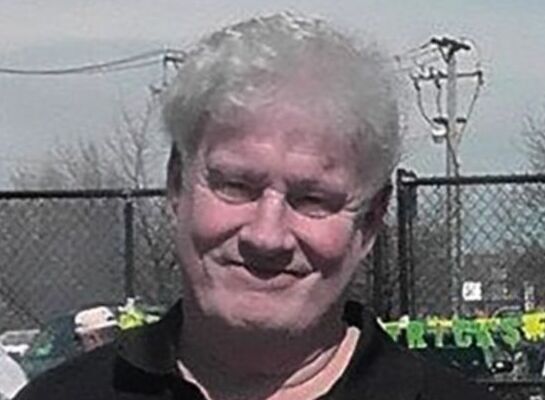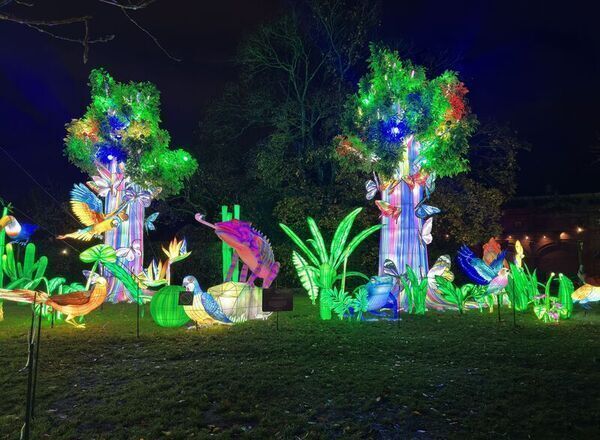Weldon House postcard from the 1940s.
Ads in the Brooklyn Eagle.
By Pat Fenton
The smells, and music and memories of places we remember are who we are. Sometimes it’s all we have left. The Beatles knew that. So did Thomas Wolf, and Pete Hamill, and Van Morrison when he wrote the haunting lyrics to “On Hyndford Street.” And in our minds it all becomes visual.
I thought about that recently after I finished watching a documentary on East Durham, N.Y., by Kevin Ferguson, called, “Dancing at the Crossroads: the Irish Catskills.”
It’s a film that pulls you along the rural roads of East Durham on long-ago hot summer days and nights when children ran freely through hay fields without a worry. It pulls you out onto the crowded dance floors of historic Irish hotels like the Weldon House as rows of dancers line up to do the Ceili on a Saturday night in the 1950s.
This was a time in a simpler America when there were no craft beers, the beer was Irish, and the sound of Irish music and heels clacking against bare wooden floors could be heard echoing out of the dance halls along Route 145. There were no iPads, no Facebook, and, way back then, no air conditioners even.
But there was the country. And that reminded all the people who came from the crowded railroad room, cold water flats of the Bronx and Brooklyn, and Rockaway, and Manhattan of the long, empty fields of Ireland that some of them would never walk through again. Ferguson has caught it all in a 90-minute film that will soon be shown across the country on PBS.
Peter McKiernan, an Irish singer, is heard in the film saying, “One thing they all had in common was that they were homesick. They were all homesick at some level.”
Kevin Ferguson first started going to East Durham in 1960 when he was just a baby. His father and mother would drive up from New Jersey, and each summer they would stay for three weeks at Mullan’s Mountain Spring House, a place owned by his aunt.
“My favorite place in the world and my warmest memory is standing outside Mullan’s Mountain Spring House on a summer evening when you can smell the flowers. You can hear the music playing from the bar,” Ferguson recalled. “You could hear the children playing way past their bedtime up in the playground up on the hill. That’s my memory of it”
One of his first memories of East Durham is sleeping in a walk-in linen closet at the Mullan’s place on a weekend that they were booked solid. “It was behind the bar, and it was very cozy sleeping with all the pillows and sheets,” he said. “I was about 7 or 8.”
He remembers drifting off to sleep listening to the flute and fiddle playing of Mike McHale, Paddy Reynolds and Andy McGann coming from the dance floor, not knowing that he was hearing three of the most famous traditional Irish musicians in America.
At first when he tried to write about the Irish of East Durham he couldn’t find his way into the story. Eventually it was a tragedy that would bring him home again. “I don’t remember the exact year, but I always felt the need to write about it,” he said. “At first I started writing different essays about what I called the main house, the main house of Mullan’s Mountain Spring. I started writing poetry, but I couldn’t wrap my brain around it.
Fern Cliff House, 1940s.
“I’ll tell you exactly what happened then,” Ferguson continued. “On Sept. 10, 2010, the main house burnt down. It was called the Blackthorne then. The Mullan family had sold it. I got a phone call to watch the local news footage on You Tube. I watched it and I was heartbroken.”
He was watching his childhood memories go up in flames. “I thought, I have to do something. And it occurred to me as I was watching this that it had to be visual. And it has to have in it all the music too. It seemed obvious to me now to do a film.”
“How did you find all the wonderful old black & white and color footage that you use in the film?” I asked Ferguson. “Was there a lot to sort through?”
“The first two years there was nothing to sort through,” he replied, “because I couldn’t get my hands on anything. I’d call up people and they’d say, ‘You know we really didn’t take many pictures back then. We couldn’t afford a camera.’
“Then Ann Mullan said, ‘Kevin, I have these old reel to reels that your Uncle Ed made in the 50s.’ So I got copies of these and I watched them. Every Wednesday afternoon they used to have barbecues out in the driveway at the Mullan house. They would have an open mic and people would get up and sing Irish songs. There were some wonderful singers like this man Joe Ryan from the Bronx Gaelic League.”
Woven into the story that Kevin Ferguson tells in his film is also a story of how East Durham has survived. Unlike the Jewish Catskills, which sadly doesn’t exist anymore, it has managed to survive the changes that swept through it over the decades.
You can still hear famous Irish singers like Andy Cooney along Route 145 in places like the Shamrock House, Gavin’s Irish Country Inn, and the Blackthorne. And each summer in July for the past 20 years it all comes back full tilt when the Irish Arts Festival comes here in July.
Ferguson describes that week as an “Irish Brigadoon.” Every day and into the night there are workshops for young people who are learning to play Irish music on fiddles, and tin whistles and button accordions, and the uilleann pipes. And along with it all are ste- dancing classes. And anyone can come and watch them.
Perhaps what sums up present-day East Durham best is a close shot of singer Larry Kirwan, the founder of Black 47, sitting in the summer fields that start on the edge of town.
As he stares across the fields of a place he’s been coming to, and playing music in, and hanging out in for over three decades, he says quietly, “Sad that maybe it’s a hard sell for some people to head up into the mountains, but people are missing something, especially Irish people and Irish Americans.
“This is a mine up here. It’s a cultural mine and you don’t have to dig that deep below the surface to find it.”
Certainly, childhood memories aren’t too deep below the surface, and Ferguson’s “Dancing at the Crossroads” evokes many of the same emotions as “On Hyndford Street.” So, in that regard, it’s worth recalling a couple of lines from the Belfast man’s song:
“…and in between the silence there was conversation
And laughter, and music and singing, and shivers up the back of the neck.”
O'Connell Lounge, 1970s.













